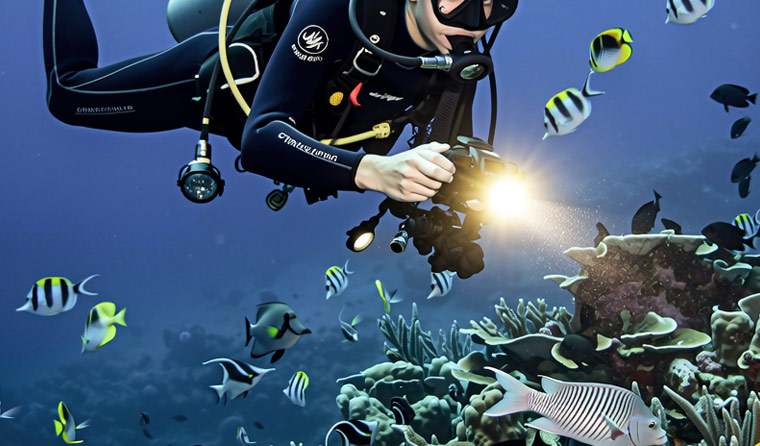
Deep - sea cameras play a crucial role in deep - sea exploration, scientific research, resource prospecting and other activities. Due to the characteristics of the deep - sea environment such as high pressure, low temperature, darkness and strong corrosiveness, selecting a suitable deep - sea camera is not an easy task. The following are the key considerations when choosing a deep - sea camera.
Pressure Resistance
The huge pressure in the deep - sea environment is the primary factor to consider when selecting a camera. The pressure of seawater at different depths varies greatly. For example, in the sea area 1000 meters deep, the pressure can reach about 100 atmospheres. Therefore, it is necessary to clarify the pressure - resistant depth range of the camera to ensure that it can work normally in the planned deep - sea exploration area. High - quality deep - sea cameras are usually made of high - strength metal or special composite materials for their shells, and have undergone strict pressure resistance tests to ensure that there will be no leakage, damage and other situations under extreme pressure.
Waterproof Performance
In addition to pressure resistance, excellent waterproof performance is also essential. Deep - sea cameras need to keep the interior dry during long - term underwater operations to prevent seawater from seeping in and damaging circuits and optical components. When selecting, check the waterproof rating of the camera to ensure that its waterproof ability meets the actual use needs. At the same time, pay attention to the camera's sealing technology, such as the material of the sealing ring and the design of the sealing structure, which will directly affect the durability of the waterproof effect.
Imaging Quality
In the dark and turbid deep - sea environment, imaging quality is particularly important. Parameters such as the sensor size, pixel count and sensitivity of the camera will affect the clarity and detail performance of the image. Generally speaking, a camera with a larger sensor size, a reasonable number of pixels and high sensitivity can capture more details in low - light environments, resulting in better imaging effects. In addition, the performance of the lens cannot be ignored. Choose a lens with good light transmittance and anti - distortion to ensure that the captured images are true and reliable.
Lighting System
There is almost no natural light in the deep - sea environment, so the lighting system equipped with the camera is crucial. The brightness, irradiation range and spectral characteristics of the lighting equipment will affect the imaging effect. Too strong light may cause reflection of suspended particles in the water, affecting image clarity; while insufficient light cannot illuminate the shooting object. At the same time, the energy consumption and battery life of the lighting system also need to be considered to ensure that it can provide stable lighting during long - term detection tasks.
Battery Life
Deep - sea exploration tasks often last for a long time, and it is difficult to charge or replace the battery of the camera midway. Therefore, the battery life of the camera is one of the key indicators. When selecting, understand the camera's battery capacity, power consumption and whether it supports external power supply. For long - term detection tasks, choose a camera with a long battery life or one that can be powered by external equipment to avoid interrupting the task due to insufficient power.
Data Transmission and Storage
A large amount of image and video data captured by deep - sea cameras needs to be transmitted in a timely and stable manner or stored reliably. If real - time data acquisition is required, pay attention to the camera's data transmission methods, such as whether it supports optical fiber transmission, wireless transmission, etc., as well as the transmission rate and stability. If the storage method is adopted, consider the capacity, read - write speed, shock resistance and anti - interference ability of the storage medium to ensure that the data can be completely read after the camera is recovered.
Operation and Control
In the deep - sea environment, it is difficult to operate and control the camera, so the operational convenience and control accuracy of the camera are very important. Some deep - sea cameras are equipped with remote control systems, allowing operators to adjust the camera's shooting parameters, angle, lighting, etc. on the surface platform. When selecting, test the response speed and stability of the remote control system to ensure that operation instructions can be accurately executed.
Durability and Reliability
The deep - sea environment is harsh, and the camera needs to have high durability and reliability to cope with various challenges such as low temperature, seawater corrosion and vibration. Check whether the material of the camera is corrosion - resistant and wear - resistant, and whether the connections of various components are firm. At the same time, refer to the product's failure rate, after - sales service and warranty period, and choose products with reliable quality and guaranteed after - sales service to reduce losses caused by equipment failures.
